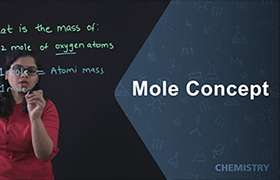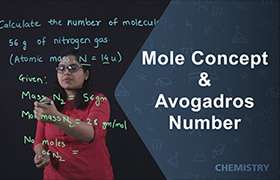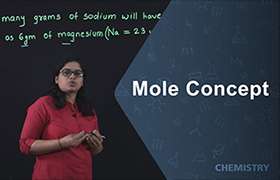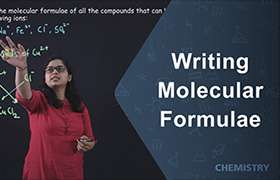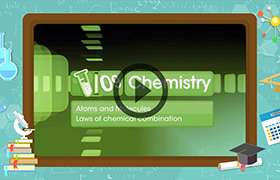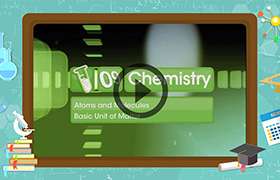CBSE Class 9 Answered
x g of a substance A combines with y g of a substance B and forms(x+1)g and (y-1)g of the new substances C and D,respectively. show that these observations are in accordance with the law of conservation os mass[A+B changes into C+D]
Asked by | 26 Oct, 2013, 06:26: AM
The Law of Mass Conservation states that mass can neither be created nor destroyed.
Or more simply, the mass of substances produced (products) by a chemical reaction is always equal to the mass of the reacting substances (reactants).
A + B C + D
xg yg ( x+1)g (y-1)g
A + B C + D
(x+y) g [(x+1) + (y -1)]g
A + B C + D
(x+y)g (x+y) g
Answered by Vaibhav Chavan | 28 Oct, 2013, 11:38: AM
Application Videos
Concept Videos
CBSE 9 - Chemistry
Asked by rajputanaji290 | 03 Oct, 2023, 09:30: PM
CBSE 9 - Chemistry
Asked by muditsharma287 | 09 Mar, 2023, 10:10: PM
CBSE 9 - Chemistry
Asked by shivalaxmi0205 | 08 Mar, 2023, 07:46: PM
CBSE 9 - Chemistry
Asked by shivalaxmi0205 | 08 Mar, 2023, 07:43: PM
CBSE 9 - Chemistry
Asked by jssjj | 19 Jan, 2023, 07:25: PM
CBSE 9 - Chemistry
Asked by mohammedhaqqani.6b | 14 Jun, 2022, 02:51: PM
CBSE 9 - Chemistry
Asked by gauravsingh36428 | 14 Mar, 2022, 07:44: PM
CBSE 9 - Chemistry
Asked by jiyajthakor | 28 Feb, 2022, 07:03: PM
CBSE 9 - Chemistry
Asked by gillsaabjashanpreetsingh3 | 16 Jan, 2022, 01:23: PM
CBSE 9 - Chemistry
Asked by prachisharma772007 | 16 Jan, 2022, 11:12: AM

